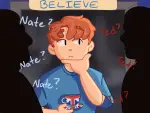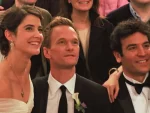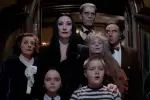The television series “Glee” evoked a wave of enthusiasm among viewers after it first aired 11 years ago. Viewers witnessed the journey of a group of young singers as they grew and learned, starting from their freshman year in high school until their graduation. After a brief break following graduation, they united again in New York City as they each pursued their own dreams.
Their version of the classic song “Don’t Stop Believin’” that was performed on the show still echoes in its fans’ ears; the energy, passion and audacity in the song clearly reflects the “Glee” team’s unity and sense of community.
For me, “Glee” elicits fond memories of my high school days. At that time in my life, my youthful mind was full of wonder, curiosity and excitement for the future. In addition to evoking these sentiments in its viewers, “Glee” portrays broad societal conflicts from many different perspectives and captures the power of communication to address individual and collective psychological needs.
“Glee” depicts a utopia filled with the values of the Western world. The show takes an honest look at seemingly unreconcilable social tensions while depicting how these strains can be overcome through the power of communication and song. It depicts a wide-ranging spectrum of issues that young people in particular typically face, and it explicitly details the struggles boiling in their subconscious minds.
Some of the topics that “Glee” grapples with include teenage pregnancy, exploration of sexuality, the hardships that come with being a student from a low-income background, anxiety about body shape and weight and the effects of both internal and external perceptions on the development of the sense of self.
Unlike most of the posts we see on social media today, “Glee” is honest and realistic. Each character has his or her own obstacles to overcome in life. Happiness is not absolute but relative, and our lives could indeed be full of dramatic changes in emotion. However, these experiences — ups and downs, more or less, something or nothing — are just part of the greater journey.
The show helps viewers — especially young people — navigate the process of self-exploration and enhance self-awareness; it offers examples to facilitate the articulation of their personal feelings and values. “Glee” encourages its viewers to embrace themselves and guides them in recognizing the value of their lives.
All of the show’s characters and their unique struggles offer sympathy and hope to members of the audience who may suffer from similar issues that are hard to share with others. “Glee” sends a vital message to these viewers: You are not alone, and you can get through this.
“Glee” does a great job of defying maladaptive norms in our society and breaking down social constructs that may have served a purpose in the past but are no longer useful in the current era. The series encourages viewers to imagine a world where the pursuit of material objects is not as important as our own enthusiasm for and enjoyment of life.
The show also teaches viewers that individuals who identify as LGBTQ+, have a disability or are otherwise denied by current social norms can achieve their personal, academic and general life goals if they choose not to be defined solely by how they do not fit into the mold that the world wants them to.
“Glee” provides an example of an ideal world where people treat each other fairly and equally, even when others make mistakes. It offers a welcome respite from the intensity and hostility of the real world and plants seeds of hope in the minds of viewers that unity is imaginable and perhaps even achievable.
It may seem that “Glee” sets out to challenge current mainstream social dynamics. However, this apparent defiance was more a trend than a purposeful resistance. “Glee” first aired in 2009, a year that marks the gradual transition of our human society into a high-tech era where individuals are more materialistically sufficient, more functionally affluent — meaning people are able to achieve higher efficiency in their lives thanks to the constant innovation of technology — and more likely to value intellectual pursuits.
When people have the ability to think beyond the limits of their own basic needs, individuality inevitably thrives. As opportunities for the core aspects of each person’s personality emerge, society will gradually adapt, typically moving from high levels of homogeneity to higher levels of diversity and inclusiveness in order to remain sustainable. This dynamic is captured by Maslow’s Hierarchy of Needs.
Earlier in history, basic human needs went unfulfilled, so people were forced to be pragmatic and focus on attaining financial and social capital to have power in society. However, as the economy continued to prosper and fundamental needs were better realized, the marginal utility of pragmatism diminished. More attention could be paid to the fulfillment of higher-level needs, such as belongingness, love, self-esteem and self-actualization.
According to history and Maslow’s theory, our society has its self-corrective function; the world of “Glee” depicts a prototype of a more inclusive society in the future.
The most salient tension throughout the series is the debate between the glee club’s supervising teacher, Will Schuester, and the cheerleading coach, Sue Sylvester, over whether musical education should be removed from the school’s curriculum or not. This tension can be observed in the real world, as music has always been an indicator of higher class or socioeconomic status.
In one episode, Schuester speaks with a former high school classmate who dedicated himself to a musical career but is now living a relatively impoverished life. He asks Schuester how his students will feed themselves in the future, and Schuester answers that students should follow their passions and dreams.
This may not seem like a convincing answer. However, one trend is implied in his response to the goals of life in the modern era: Self-actualization outweighs basic needs. Does this fact contradict Maslow’s Hierarchy of Needs? No, the further implication here is that basic needs have already been fulfilled.
“Glee” also emphasizes the importance of social cohesion, which is reflected by the core value of unconditional inclusion in the glee club. Members can find a spot in a community where everyone else accepts them. In the warm and judgment-free glee club, students’ fundamental psychological needs are met through the interactions with their meaningful network, sustaining their senses of self-worth and value.
“Glee” leads me to consider the following questions: Given the disruption of technology and more forms of remote communication, how could the significance of social cohesion change as the world keeps evolving? How would increasing globalization continue to shape the form of social cohesion in our society? And lastly, in this transformed world, how much room would exist for “self-cohesion,” which “Glee” strives so hard to prove?

















